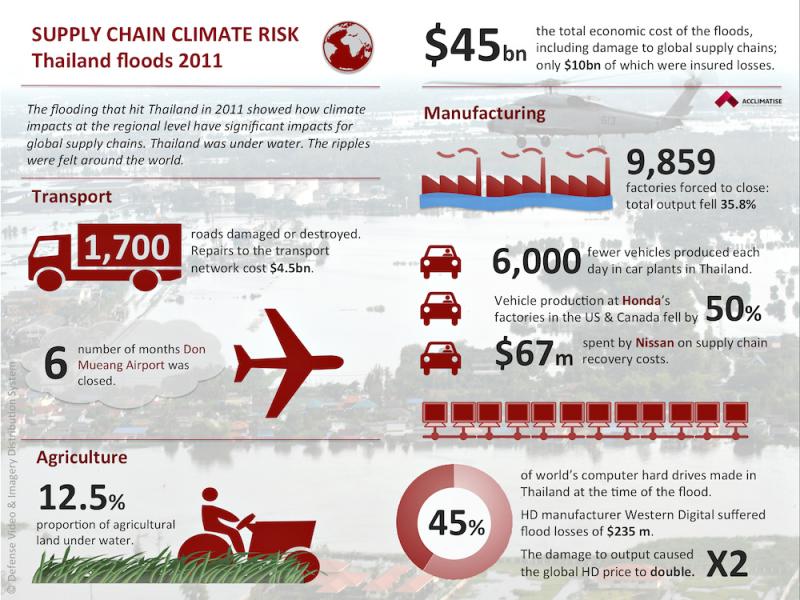Supply Chain Security
Supply chains are the sequences of processes involved in the production and distribution of goods and services. In today’s economy, many supply chains are complex international networks that rely on roads, rails, waterways, air routes, and pipelines to gather raw materials and deliver goods and services to the customers who use them. Telecommunication systems are also an important part of supply chains: communication services are essential for tracking and coordinating inventories and orders. As climate scientists project the frequency of conditions that can cause disruptions to transportation and telecommunication systems to increase, they expect risks to supply chain security to increase as well.
Supply chain risk factors
The manner of transport for goods has a major influence on the vulnerability of materials in supply chains. For instance, containerized freight can generally be moved by multiple modes with relatively low vulnerability to damage. However, bulk cargo goods (such as oil, gas, coal, and agricultural commodities) rely on more specialized systems, and are at higher risk because they are dependent upon particular facilities. The intersection of exposure to extreme weather with high-value products and low redundancy in transportation systems—for instance, the process of transporting oil and gas from port facilities or moving grain from elevators—can pose particular supply chain risks.
Another major component of supply chains is telecommunications. With modern consumer products now including services and intellectual property, negative impacts on telecommunication systems could have broad impacts on certain supply chains. For instance, Hurricane Sandy inflicted $1 billion in damages to Verizon—the single largest financial impact sustained by the company in its history. Impacts to service providers are multiplied when customers of those systems cannot access their services. Telecommunication outages can result in untold delays to supply chain operations.
Delays compound disruptions
With globalization and an increasingly connected and complex network of production and transportation, even a single climate-related disruption to a supply chain can cause a chain reaction of impacts across other sectors in countries around the world. This was made clear when severe flooding in Thailand disrupted electronics manufacturing in 2011, leading to a worldwide shortage of hard disk drives.1
Sources of raw materials
Climate change is also likely to impact the accessibility of inputs and materials that feed into various supply chains. For instance, a northward shift in agricultural production will require changes in the supply chain transportation routes. Additionally, some forests face increased risks from wildfires and insect infestations, and this may change the source area for wood products used in home building, paper, and other industries.
Improving resilience
Recognizing vulnerabilities to climate-related events is the first step in building resilience to them. Given the large number of steps in many supply chains and the range of transportation modes available for each step, supply chain managers may be able to increase their resilience to extreme events by diversifying their product flows or making new arrangements for high-risk portions of their chains.
- 1Levermann, A., 2014: Climate economics: Make supply chains climate-smart. Nature506, 27–29.

